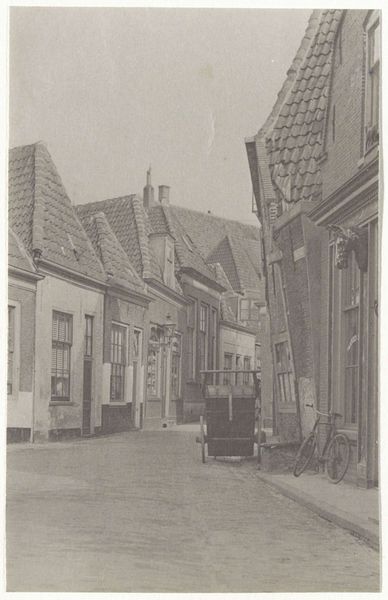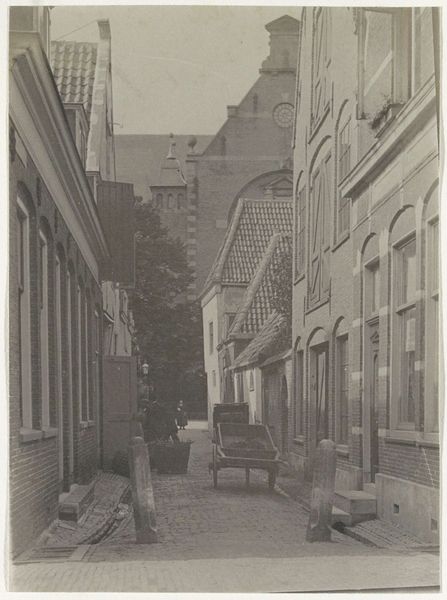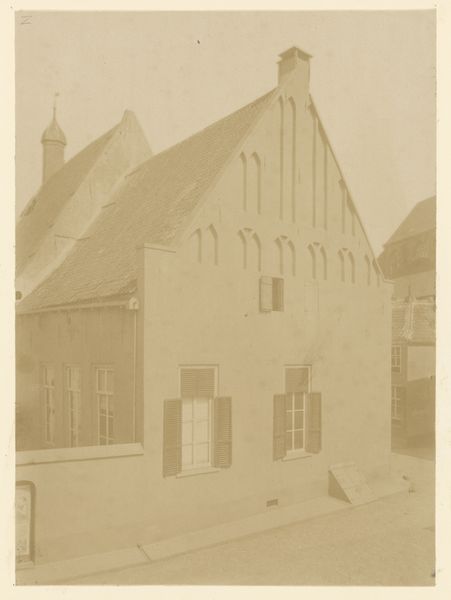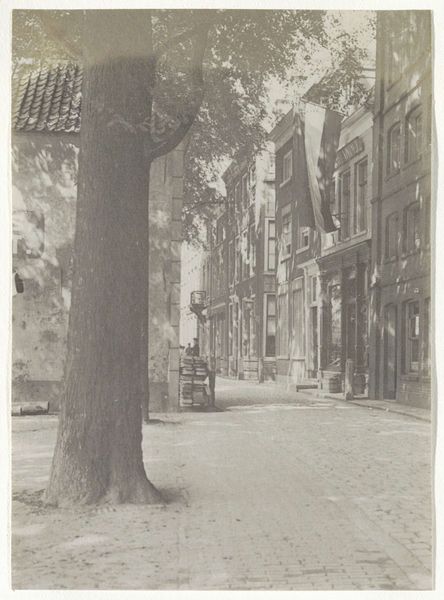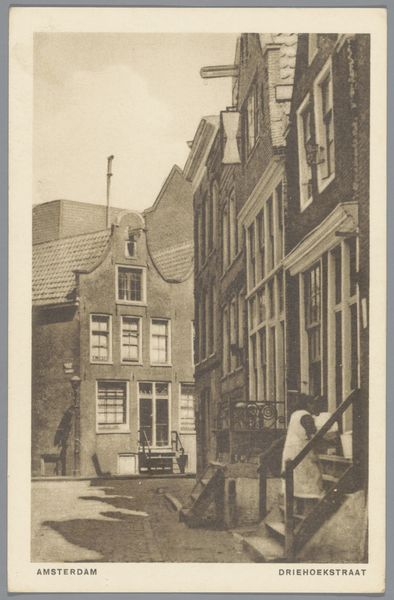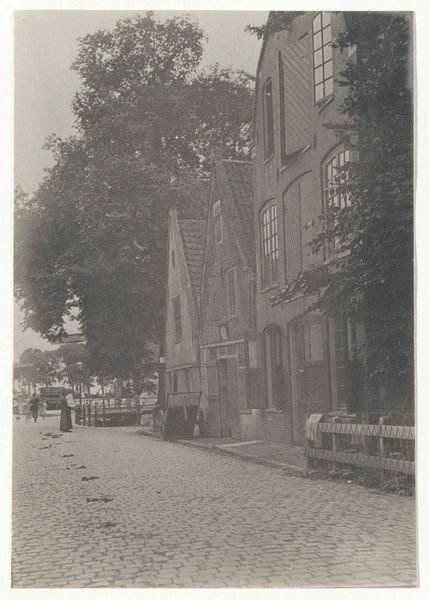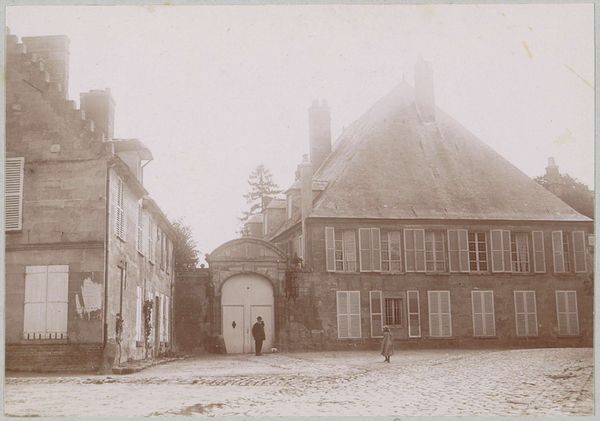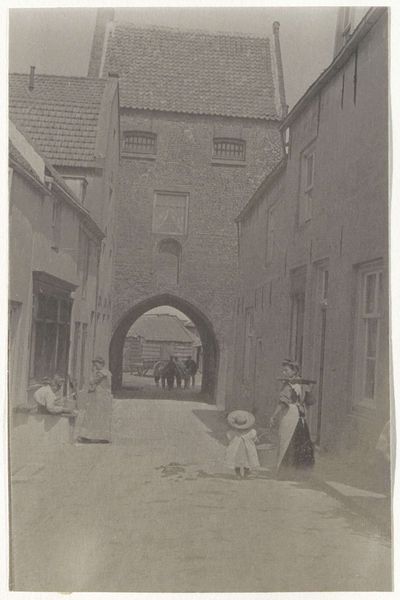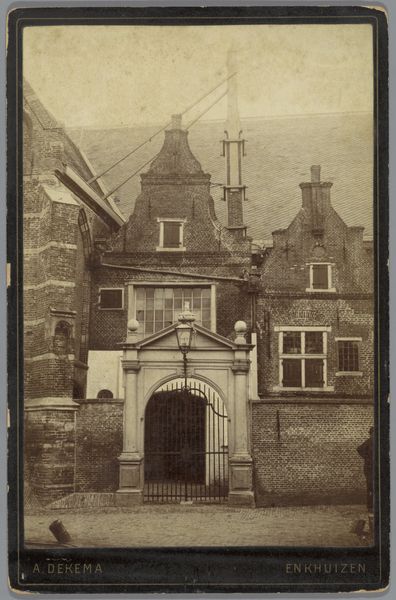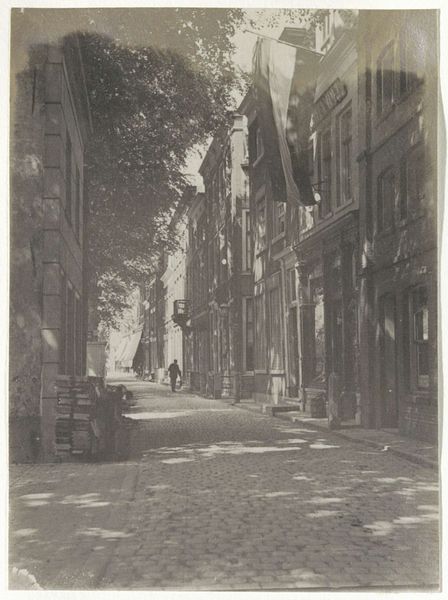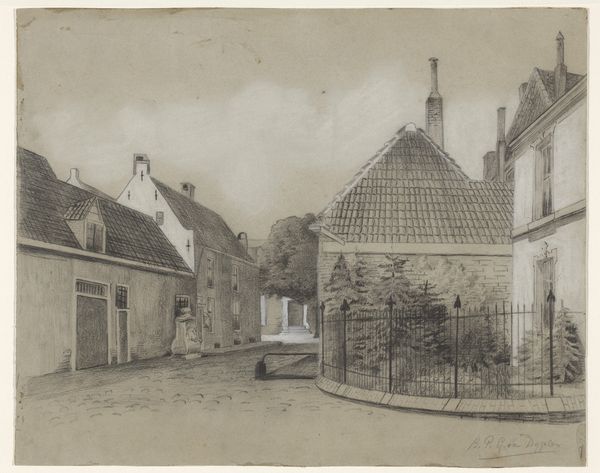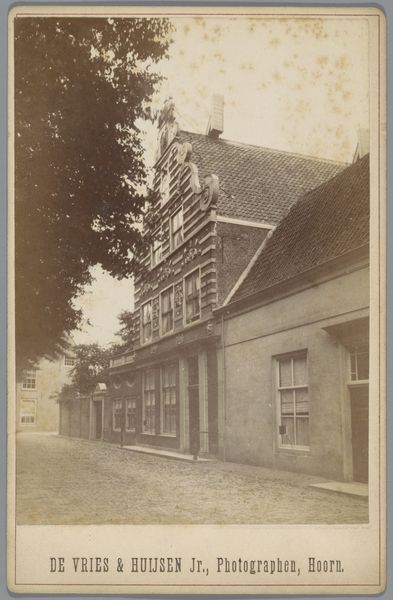
Gezicht op de Pieterseliesteeg te Hoorn, gezien naar het Kerkplein met de Grote Kerk c. 1900 - 1910
0:00
0:00
print, photography
#
print photography
# print
#
landscape
#
outdoor photograph
#
archive photography
#
street-photography
#
photography
#
historical photography
#
monochrome photography
#
cityscape
#
monochrome
Dimensions: height 95 mm, width 69 mm
Copyright: Rijks Museum: Open Domain
Curator: Here we have a photographic print, dating from around 1900 to 1910. The photograph, attributed to G. Hidderley, captures a street scene. It's titled "Gezicht op de Pieterseliesteeg te Hoorn, gezien naar het Kerkplein met de Grote Kerk." Editor: The first thing I notice is how the monochrome treatment lends such a serene, almost dreamlike quality to the otherwise quotidian scene. The geometry of the buildings is striking; sharp angles are juxtaposed with the softness of the trees. Curator: Yes, the photographer has carefully composed the scene using strong perspectival lines leading back to the church. The contrast between the textured tile roofs and the smoother walls creates a visually interesting surface. There is almost a layering effect occurring. Editor: That church is important I suspect. Visually, it punctuates the end of that narrow alley. Given the church's imposing presence at the vanishing point, what might it have symbolized for the people of Hoorn at that time? Is this intended to project safety, reassurance—maybe even an aspiration to some divine order? Curator: Precisely. And let's consider the street itself, devoid of people. Its emptiness can be interpreted as highlighting the architectural forms as the true subject of the photograph. Note the shadows and highlights—pure form making shape. Editor: Absence is definitely a symbol. This image projects an era of quiet dignity and societal adherence. The architecture communicates that Hoorn society was formal and long-lasting. Also, do you think it matters what the photograph does not show—everyday things like commercial signs, other structures, contemporary faces and gestures? Curator: Perhaps this absence speaks to a more universal timeless quality, rather than documentation of everyday activity. The materiality of the print itself further enhances this effect; a tangible object referencing a specific, yet somewhat idealized, past. Editor: It makes me reflect on how photographs like these shape our collective memory and understanding of places long gone, but I can’t help feel for the lost history that is omitted. I guess the monochrome lends some credibility; the choice does shape our acceptance of such history. Curator: Indeed. It invites reflection on time, place, and the enduring power of simple compositional structures. Editor: Absolutely. It causes a fascinating moment, looking back to the past.
Comments
No comments
Be the first to comment and join the conversation on the ultimate creative platform.
